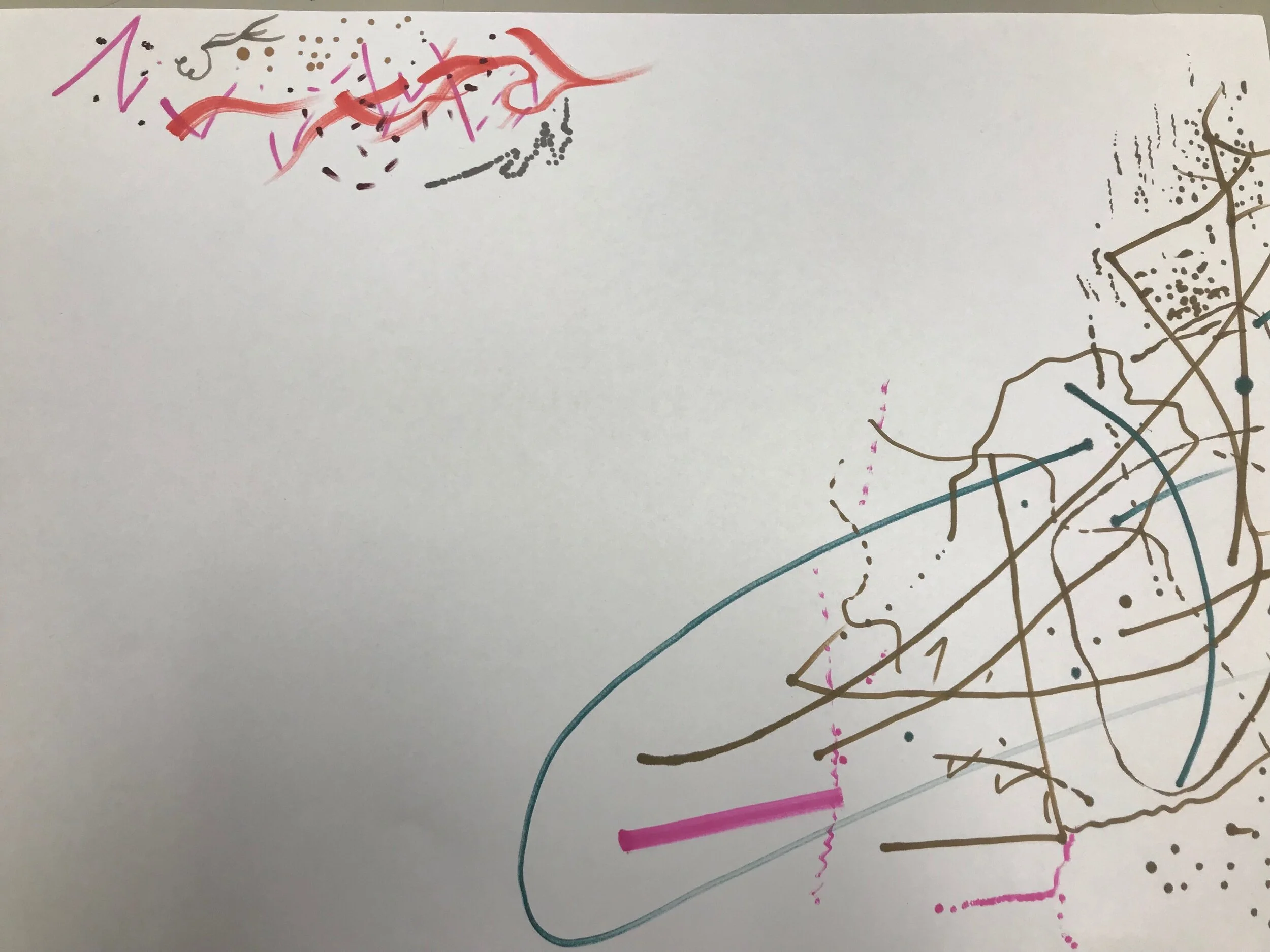#12: Sketch a Sound
Listening: it’s looking—but with your ears.
Instructions
Pause and notice sounds in your environment.
Locate a sound that is familiar to you.
Pay attention to tone, rhythm, volume, and duration.
Experiment with making a visual version. Consider color, shape, texture, and line.
What the CHOO?
I don’t remember bird sounds growing up in Los Angeles, save for over-the-top yelling by crows, or that hawk sound effect used in movies. However, I do remember that everyone knew the generic loop of sound effects for car alarms, and once in school our entire class broke into “singing” along with the beeeOOPP beeOOPP BEH BEH BEH BEH DO-DEE DO-DEE…
It makes sense that I noticed birdsong as I got older and got into meditation and mindfulness. When we moved to a quiet part of Brooklyn, my wife and I had a tiny rear apartment on the fourth floor with windows facing the interior backyards, creating a bubble of sound that bounced around in while filtering out neighborhood noise. I became very familiar with the tree in the backyard, and the arrival of cardinals—easy to spot in bright red, especially with their preference for height next to our windows. Cardinals like to be loud, and the ones near us have a common refrain of TWEEE TWEE, CHOO CHOO CHOO CHOO. The number of CHOOS at the end can vary, but usually it’s three or four.
The other day we had the window open and a cardinal WENT OFF with about 20 CHOOS in a row. The pandemic has made the mundane very exciting. Jenny Odell is an artist and writer and zealot for getting to know birds as a way of being connected to place.
“...observing birds requires you quite literally to do nothing. It’s sort of the opposite of looking something up online. You can’t really look for birds. You can’t make a bird come out and identify itself to you.”
Capturing sound in digital audio form is relatively easy these days, and after years of editing video and audio I’m somewhat familiar with waveforms, though those display only volume and the general shape of a sound.
Image: Dropbox preview of a song in semi-waveform view
Musicians have notations on musical scores, but the general knowledge of reading music has waned, I think. Old knives have been found that had music inscribed on them to sing with special meals!
Artists have often tried to capture the FEELING of sound. John Cage was famously obsessed with capturing the totality of sound, and published a graphic musical book of notations collaboration with the artist Alison Knowles and musicians in 1969. An updated version of the experiment was published in 2009 by Theresa Sauer and designer Mike Perry.
Extra Fun Links about Birds, Found Sounds, Shapes, and Music
The growth of digital tools has opened some really fun experiments with images interpreting and connecting to sound. No longer do you need a studio of animators like Disney did with Fantastia—Stephen Malinowsi has created hundreds of graphical scores of classical music and uploaded those to YouTube.
One of my favorite musical groups is Lullatone, two people in Japan who make very adorable music (it’s hard to hate a song called “falling asleep with a book on your chest”). They often utilize found sound and synthesizers, such as sampling a bird song into an existing song. They also created a really fun online app called PATATAP that uses your keyboard to make sounds and images that’s worth a spin.
Need more inspiration? The Tate created an activity for kids about creating a sound creature.
So take a listen and get curious about sounds, other than just music (“oh, I love this”) and other sound (“shut that baby up!”).
And take care of your ears! They’re the eyes of your head…oh, wait.
*** The bottom part *****
Check us out on Instagram @lookandmakeart — tag this prompt with #lookandmake12
Want to share what you did? YAY! Email me with your name as you want it to appear. Archives of some or all messages will live on lookandmake.art
Have a prompt you want to share? DOUBLE YAY! Reach out!
You made it to the end. Thank you.






